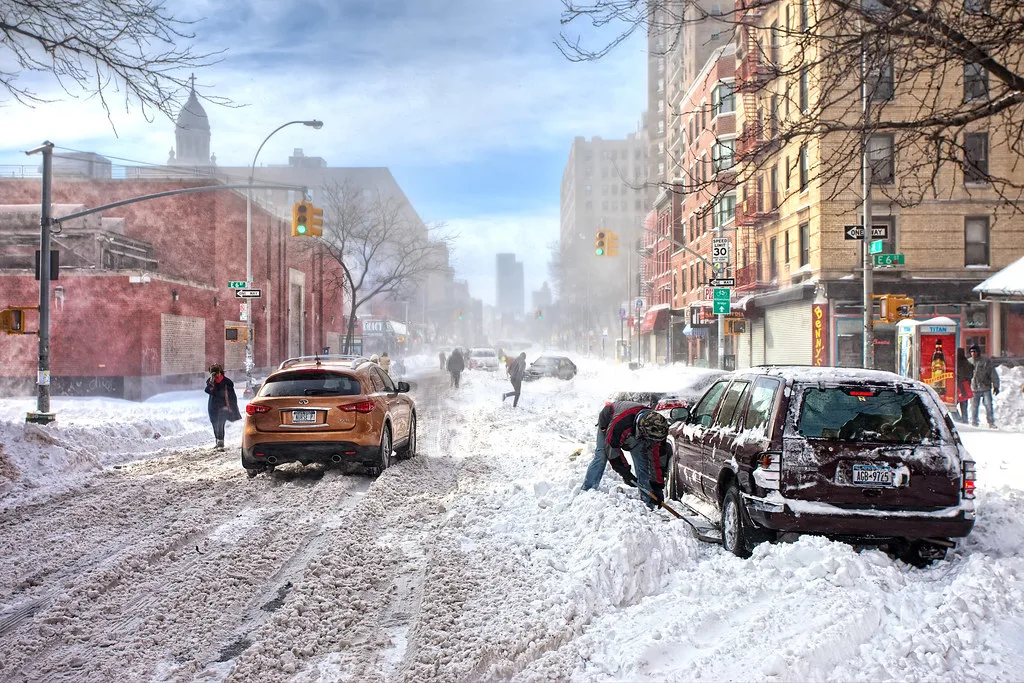Introduction:
With a significant winter storm on the horizon, New Yorkers are gearing up to face challenging weather conditions. As snowfall, high winds, and coastal flooding threaten the city, it’s crucial for residents to be well-prepared and informed. This article aims to provide essential tips and guidance for navigating the impending winter weather, ensuring the safety and well-being of everyone in New York City.
Understanding Winter Storm Forecasts:

The first step in preparing for a winter storm is understanding the forecast. According to the latest predictions, New York City is expected to experience a transition from rain to snow overnight, with the heaviest snowfall rates anticipated during the morning hours. Accumulations could reach anywhere from five to eight inches, with localized variations across different boroughs. Additionally, high wind gusts and coastal flooding are anticipated, further complicating travel and safety conditions.
Understanding the Impending Snowfall and Ensuring Safety Amidst Challenging Conditions
Preparedness Measures:
In anticipation of the winter storm, it’s essential for New Yorkers to take proactive steps to stay safe and minimize disruptions. Here are some key preparedness measures to consider:

- Stay Informed: Keep abreast of weather forecasts and advisories issued by local authorities. Platforms like Notify-NYC provide real-time updates and alerts regarding the storm’s progression, enabling residents to stay informed and prepared.
- Limit Travel: Given the hazardous conditions, it’s advisable to limit non-essential travel and stay indoors whenever possible. Avoid venturing out onto the roads unless absolutely necessary, as visibility and road conditions may deteriorate rapidly.
- Utilize Public Transportation: Opt for public transportation over personal vehicles to reduce traffic congestion and facilitate snow removal efforts by city authorities. Plan your routes in advance and allow for extra travel time due to potential delays.
- Prepare Emergency Supplies: Stock up on essential supplies such as food, water, medications, and batteries to sustain yourself and your family during power outages or transportation disruptions. Ensure you have adequate heating sources and emergency lighting available.
- Clear Sidewalks: Property owners are responsible for clearing snow and ice from sidewalks adjacent to their premises to prevent accidents and ensure safe pedestrian passage. Shoveling and salting sidewalks promptly can help mitigate slip and fall hazards.
Key Characteristics of Winter Storms:
Snowfall: Winter storms often bring substantial amounts of snow, which can accumulate rapidly and create hazardous conditions on roads and sidewalks.
Freezing Rain: In addition to snow, winter storms may also produce freezing rain, which occurs when raindrops freeze upon contact with cold surfaces, forming a layer of ice known as glaze. Freezing rain can coat roads, trees, and power lines, leading to slippery conditions and potential damage.
Strong Winds: Winter storms are often accompanied by strong winds, which can exacerbate the impacts of snow and ice by causing drifting, reduced visibility, and wind chill effects. High winds can also down trees and power lines, leading to power outages and disruptions.
Cold Temperatures: Cold temperatures are a hallmark of winter storms, with sub-freezing conditions prevailing throughout the event. These cold temperatures can pose risks to health and safety, especially for vulnerable populations such as the elderly and homeless.
Impacts of Winter Storms:
Transportation Disruptions: Winter storms can disrupt transportation networks, including roads, highways, airports, and public transit systems. Snow and ice accumulation can make travel hazardous, leading to accidents, delays, and closures.
Power Outages: Heavy snow, ice, and strong winds can damage power lines and utility infrastructure, leading to widespread power outages. Loss of electricity can impact heating systems, communication services, and essential facilities such as hospitals and shelters.
FAQ?
Q1. What are the expected snowfall accumulations for New York City?
A1. New York City is forecasted to receive accumulations ranging from five to eight inches, with localized variations possible across different boroughs.
Q2. Will public schools be open during the storm?
A2. No, New York City public schools will transition to remote learning to ensure the safety of students and staff amidst the inclement weather conditions.
Q3. How can I stay informed about the storm’s progress?
A3. You can stay informed by subscribing to Notify-NYC for real-time updates and advisories issued by city authorities, ensuring you’re well-prepared for any developments.
Q4. Are there any travel advisories in place for New Yorkers?
A4. Yes, NYC Emergency Management has issued a travel advisory, urging residents to limit travel and use public transportation where possible to minimize risks and disruptions.
Conclusion:
As New York City braces for the winter storm, proactive preparedness and informed decision-making are essential for ensuring the safety and well-being of all residents. By staying informed, limiting travel, and taking necessary precautions, New Yorkers can navigate the challenges posed by the impending weather event effectively. Let’s prioritize safety, resilience, and community support as we weather the storm together.
Recommended Reading:-https://citytimesnow.com/the-winter-solstice-and-the-shortest-day/


